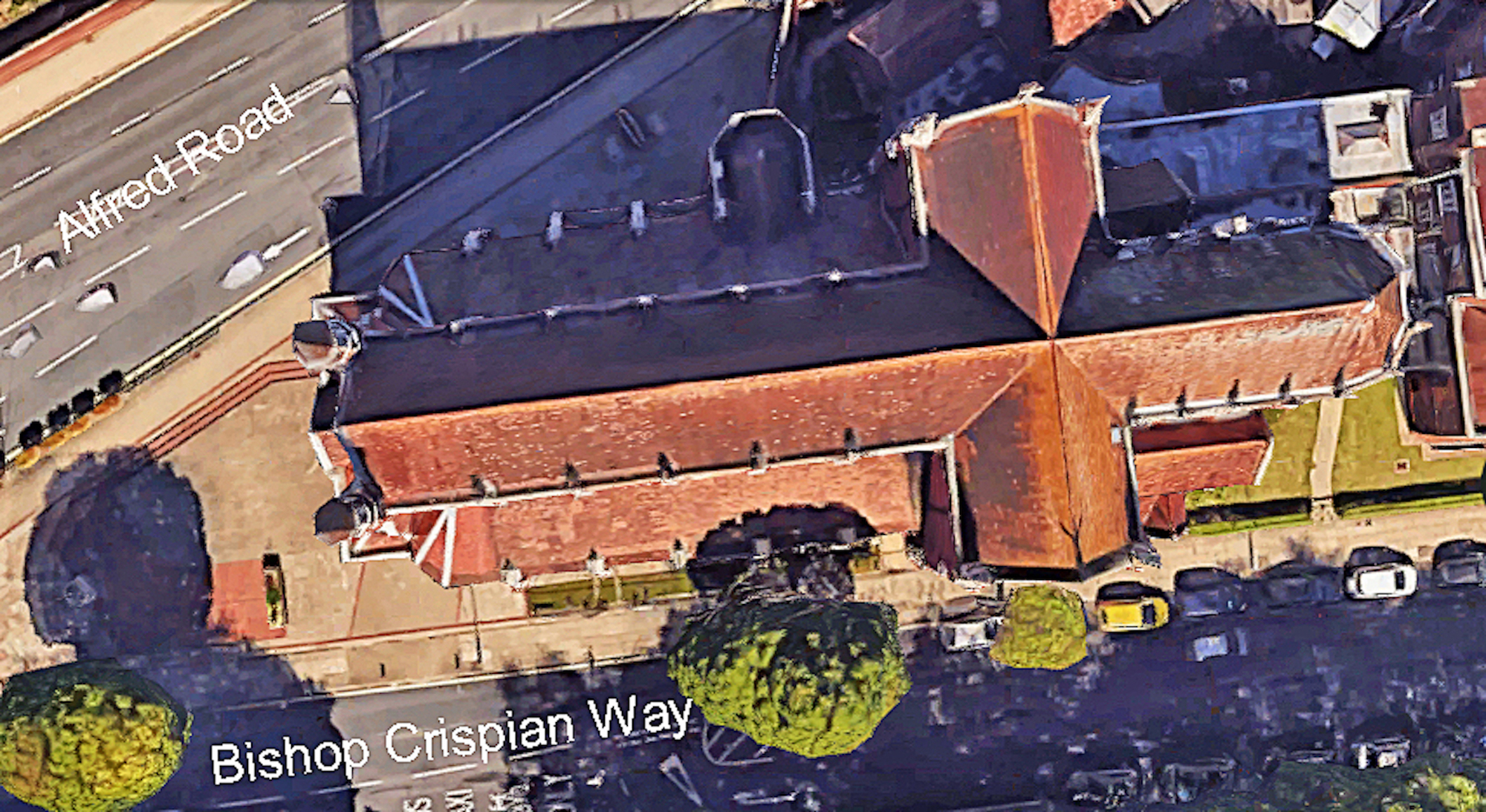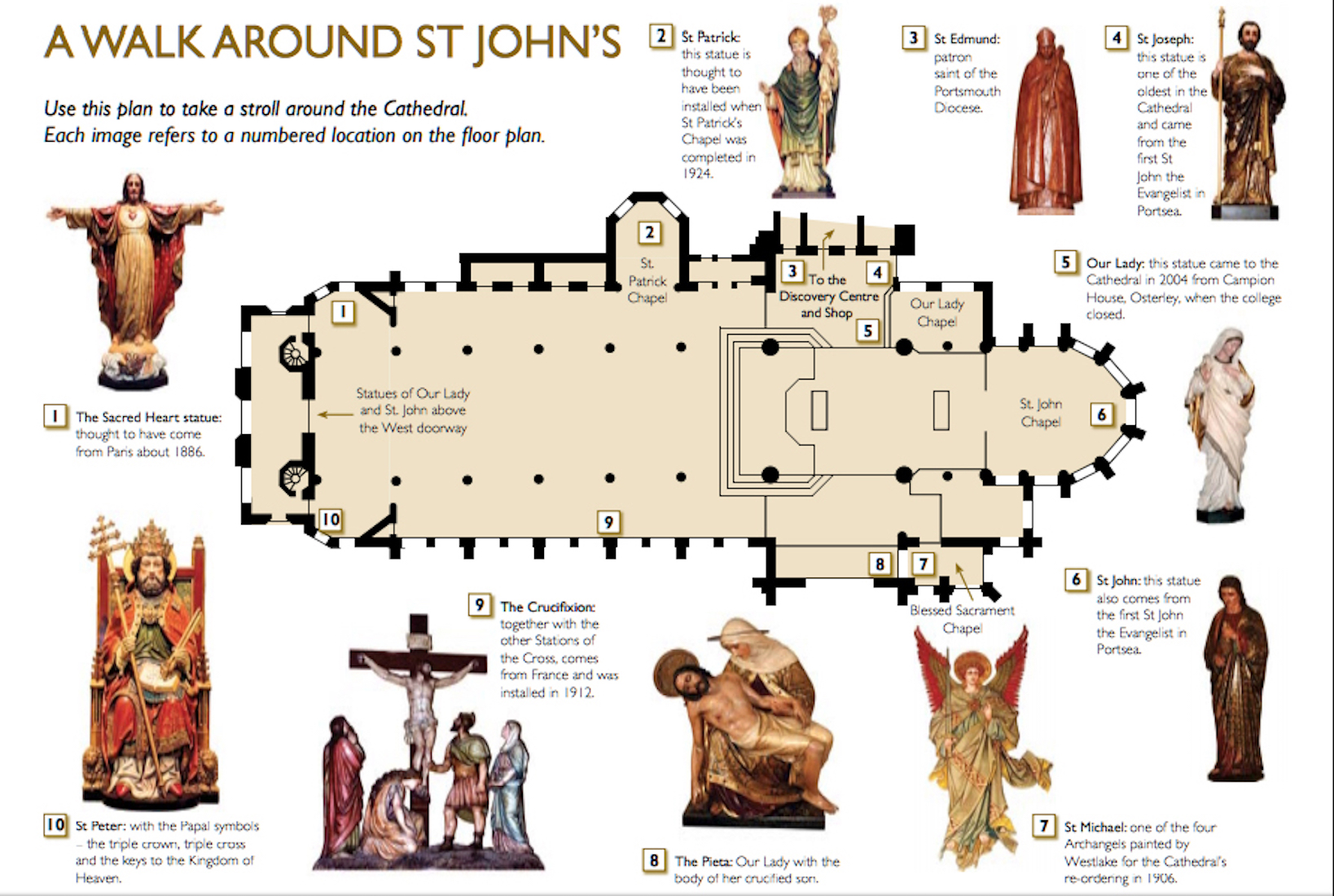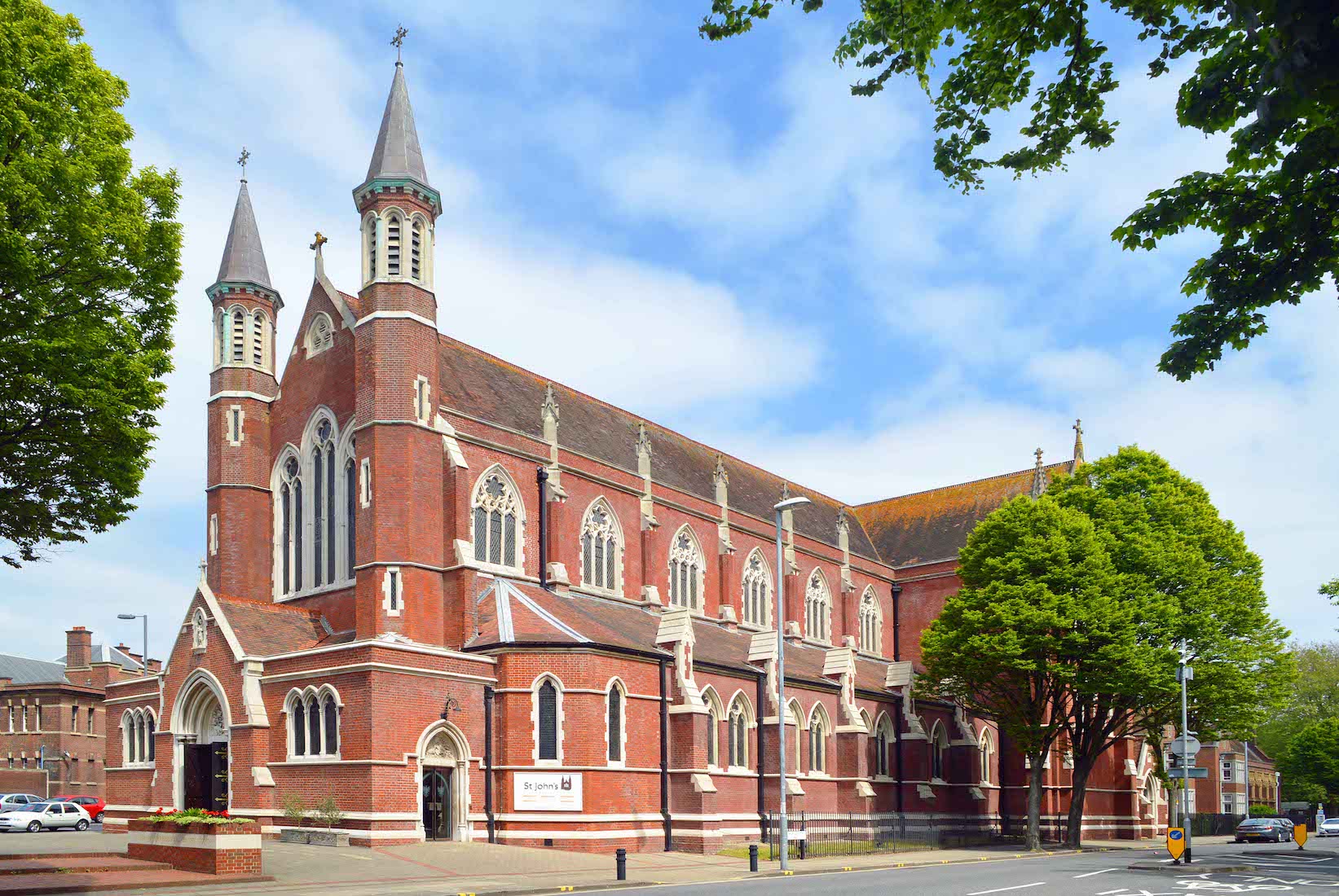PORTSMOUTH CATHEDRAL
HAMPSHIRE, ENGLAND CATHOLIC
PAUL SCOTT

SATELLITE VIEW
The Cathedral is cruciform in shape with its main axis in an east-west direction. We shall therefore be able to assume that our liturgical and geographical directions coincide.
The nave has a covered aisle on each side, and there are two small Western towers. St Patrick’s Chapel extends from the Northern (left) side of the nave. There is a chapel just East of each transept: the Lady Chapel adjoining the North transept, and the Chapel of the Blessed Sacrament adjoining the South transept.

The excellent plan supplied by the Cathedral shows many of the highlights of our tour. We shall enter by the West door, and the navigation after that is quite straightforward.
A brief history of the Cathedral follows below. If you wish to proceed immediately with your tour of the Cathedral, tap / click on START .
You can also access intermediate points in the tour by a tap / click on the following links:
NOTE ON MAGNIFYING IMAGES
With this website format the images are large enough for most purposes. If there is a need for greater magnification of an image, go to the identical photo on
https://www.flickr.com/photos/paulscottinfo/albums
and use Command - + (Mac) or Windows - + (Windows).
HISTORY
[Wikipedia]
In 1791, Rev. John Cahill was assigned to Portsmouth and held services in a private house. A chapel was opened in Prince George Street in 1796 by Rev. Joseph Knapp. As a garrison town with an increasing number of Catholics, a larger space was needed. In 1877 Rev. John Horan purchased land from the War Department and hired architect John Crawley. Construction started in 1880, thanks to a donation from the Duke of Norfolk. It was opened in 1882 and is the first cathedral to have been built in Portsmouth.
When the Diocese of Portsmouth was formed in May 1882, St. John’s was named the cathedral. The cathedral was consecrated by the first bishop of the new diocese, John Vertue, on 29 March 1887. He enlarged the cathedral and completed its interior decorations. He built an episcopal residence and a large hall adjoining, which, with the cathedral, form a group of buildings artistic in design, and architecturally, a most noteworthy structure, among the ecclesiastical buildings in the Borough of Portsmouth.
Architecture
The cathedral was designed in Gothic Revival style by John Crawley in 1877–1881. Crawley died just as building started and his partner Joseph Hansom took over the project and modified the design, working on it until 1896. The church is built of Fareham Red Brick with Portland stone dressings. In 1900, John Cahill succeeded Vertue as Bishop of Portsmouth. Cahill completed the cathedral by adding the West front; the bell towers, designed by Canon Alexander Scoles, were added in 1906.
A memorial chapel dedicated to Our Lady Immaculate and St Edmund of Abingdon, patrons of the Diocese of Portsmouth, was created at the East end of the North aisle in memory of Bishop Vertue. A bronze statue of St John the Evangelist, by sculptor Philip Jackson, stands eight feet tall outside the Cathedral.
Most of the stained-glass windows sustained some bomb damage in 1941, especially those over the high altar. The round window in the South transept was the only one not damaged. An elaborate baldacchino surmounting the high altar was removed in the 1970 reordering. The last part to be built was St Patrick’s Chapel in 1924.



